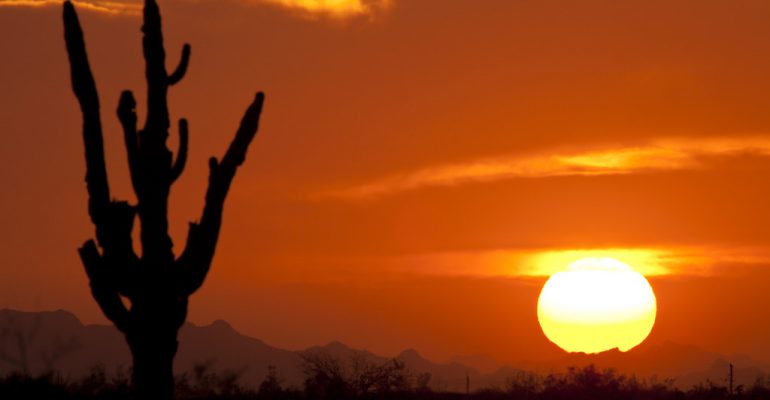Dehydration & Heat
9th and 10th Days of Dhul Hijjah (The day of Arafat and the Night in Mudzallifah followed by Tawaaf in Makkah)
The first day of Hajj pilgrimage starts on the 8th Dhul Hijjah and for most people from the west it is their first exposure to the Tent Village in Mina. The men will be wearing two unstitched sheets, one covering the lower half the body and the other sheet, their trunk. Along with this introduction also comes the stark dawn of a new reality.
- Blocks of toilets, cramped side by side, cleaned only if the cleaners can get past the rows of 20 to 30 people waiting to use them. The sanitation awful with no toilet rolls, no bleach and little privacy for bodily sounds as they escape for all to hear due to the often open topped toilets.
- The scorching midday heat exceeding 40 degrees with no air conditioning and water coolers, if you’re fortunate to have them in your tents, as a poor substitute.
- A slow acceptance of the reality that masses of people from all corners of the world will be sandwiched like sardines, each with an allocated tent space no bigger than that of a fold out mattress.
- Recognising that the two worn wrapped sheets (for the men) will be the dress code for the next 48 hours, with no showers, no laundry and only sweat and grime as a companion.
- The knowledge that up to 3 million people all cramped in a 5 x 5 km space in the tented Mina area will all be moving on mass the following day to reach the planes of an area called Arafat, located approximately up to 10 km away, where for the best part of 6 hours from midday to dusk a sea of people in white will stand seeking Allah’s forgiveness and standing in private prayer.
- Following this standing in the midday heat, the night will be spent sleeping on hard ground floor in a co-located area, called Mudzallifah, to which the same mass of up to 3 million will all migrate.
- Once dawn approaches after spending the night with probably little or no sleep, the sea of the same 3 million people will move to throw pebbles at the place where the symbolic stoning of Satan takes place, back in the tented area of Mina.
Some pilgrims may be fortunate enough to be part of select groups who may be using the new Metro train service. The journey times supposedly cut from hours to minutes. This information may trigger relief but the reality can be very different. The waiting times to board at the platforms can run into hours. I know, I’ve been there! And the journey goes on…
I could go on, but the reality for the unprepared person is a shock to the system whereby people from the west can often begin to make foolish, unintelligent and insensible judgement calls. The biggest and most worrying being – ‘If I don’t eat or drink I won’t need to use the toilets’. Do not engage in this mind-set, it will probably land you in hospital.
During these difficult days of the Hajj there is a persistent failure by pilgrims to recognise that the heat, measuring over 40 degrees takes no prisoners and that this, coupled with poor preparation, poor oral hydration, continual fluid loss from the walking you will invariably need to be doing (up to 15km in the next 24 -48 hours) is a sure recipe for one’s body to become affected by dehydration and heat related problems. My top tip is – anticipate that you will lose fluids and these will need to be replaced regularly.
The average male and female need approximately 2 to 3 litres of fluids respectively a day plus replacement of excess fluid loss from excessive sweating and in some causes from diarrhoea and vomiting, which is not uncommon. Walking in the midday heat can easily result in 2-3 litres of fluid being lost and simple mathematics says 3 litres needed plus 3 litres lost, equals 6 litres. Now not everyone will need this much but the principle is simple, if you want to remain well, your body needs fluid and nourishment. A 500mls bottle of water alone is no replacement!
Top Tip No2
Always carry fluid with you and don’t just restrict it to water alone. Fruit juices are beneficial as they provide fluid, nutrients and sugar.
That said, common sense also says, if one drinks one, will need to use the bathroom thus my advice is drink steadily throughout the day, and use to toilets as often as needed, if even it invites a long wait. For those with medical problems seek the advice of a medical practitioner and your local tour guide who will be best placed to advise you on where and how often the next lavatory break is likely to be.
Furthermore some pilgrims will have medical issues in that they need to take water tablets, which will cause them the use the bathroom more often. If this affects you, please do not stop taking your medication for fear of not being able to get to the toilet in time. Seek a medical opinion, which from personal experience can often alleviate your anxieties.
Now, with all the above said, some pilgrims will and do become dehydrated, despite the best preparation. Thus heat related problems are common and range from mild dehydration to, at worst heat stroke. This is the worst case scenario and merits immediate hospital treatment, as it would suggest the body is losing it’s ability to control it’s internal temperature. This is a medical emergency, but one which fortunately in 11 years I have personally never witnessed.
So the following is a small summary of simple sensible measures you should take for heat related problems.
- Always carry fluid and a sugary source with you at all times
- Try to avoid walking in the midday heat
- Use an umbrella to shield the sun
- Be mindful of the symptoms of dehydration which can include headaches, dizziness, nausea, vomiting and muscle cramps
- Should you be affected, move into the shade, loosen any tight clothing, take in fluid such as a sports drink or water supplemented with a rehydration sachet such as diarrolyte and apply a cool wet flannel to the back of the neck and face.
- Seek medical help and stop any exertional activity.
- In the event that aggression, confusion or excessive sleepiness arise, or the skin loses its ability to sweat (in that the skin becomes hot and dry), apply the above measures and summon urgent medical help as these are some of the features of heat stoke, which can be life threatening.
In my experience problems can be summed up by a simple equation
Heat + Exertion + Fear + Dehydration = Collapse
Heat + Exertion + Fear + Dehydration + Collapse = Hospital
Final top tip – Anticipate heat and fluid problems, accept the reality of your surroundings, prepare for the heat and then prevent, because you know how to.
About the Author
Mr Imran Zia is a Consultant in Emergency Medicine at the Whipps Cross Hospital, Barts Health, London.
He has travelled accompanying pilgrims as a medical advisor and tour group doctor to the Hajj for the last 11 years. Over this time he has gained a valuable insight into the common medical themes that affect pilgrims and how they can be addressed in a practical manner, at times where local medical help may not easily available. These short articles are being written with a ‘prevention is better than cure’ mind set. The numbers of years experience based upon exposure, dealing with illness in a congested foreign healthcare structure has placed him in the unique position to be able to share
Articles by Dr Imran Zia:

Dr Imran Zia
BSC MBBS MRCS FRCEM PGDIP (MED ED)
Guest Writer & Medical Advisor
Clinical Director, Emergency Medicine
Whipps Cross Hospital
Barts Health NHS Trust, London.
Mr Zia is a practicing Emergency Medicine Consultant and has traveled accompanying British pilgrims as a medical advisor and tour group doctor to the Hajj for over 15 years.
Over this time he has gained a valuable insight into the common medical themese chich affect pigrims and how they are addressed in a practical manner, at times when medical help may not easily be available.
He is a guest writer and health advisor to CBHUK.


Comments are closed.